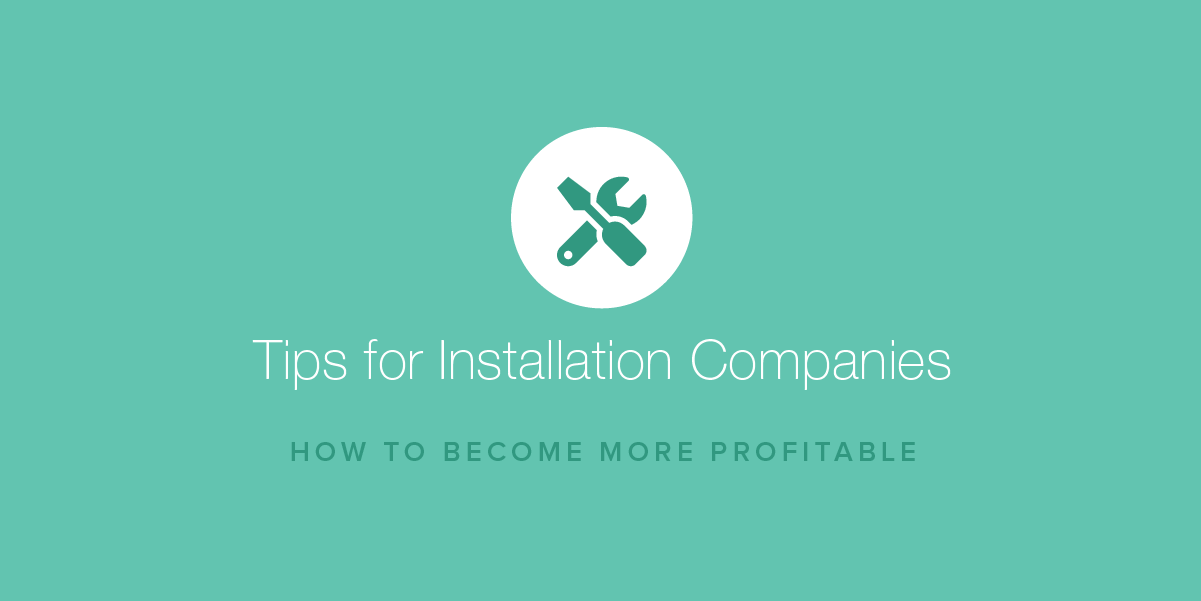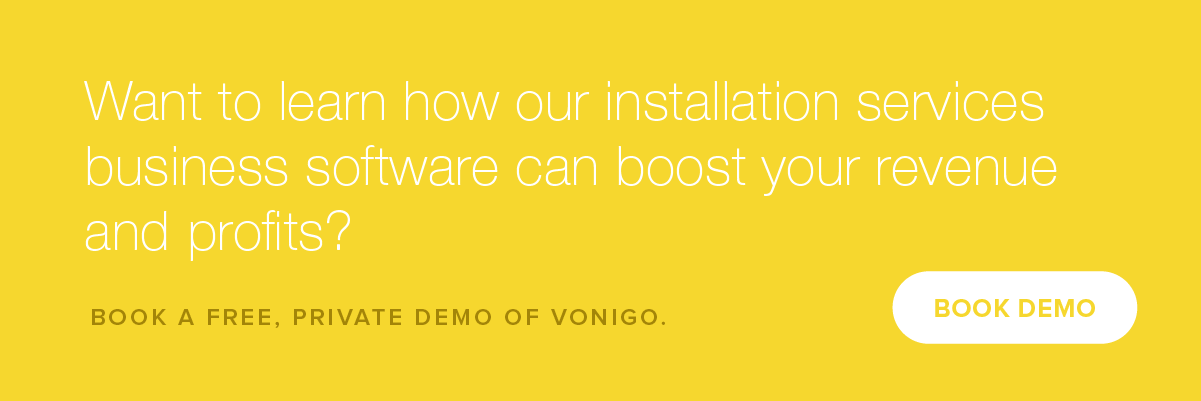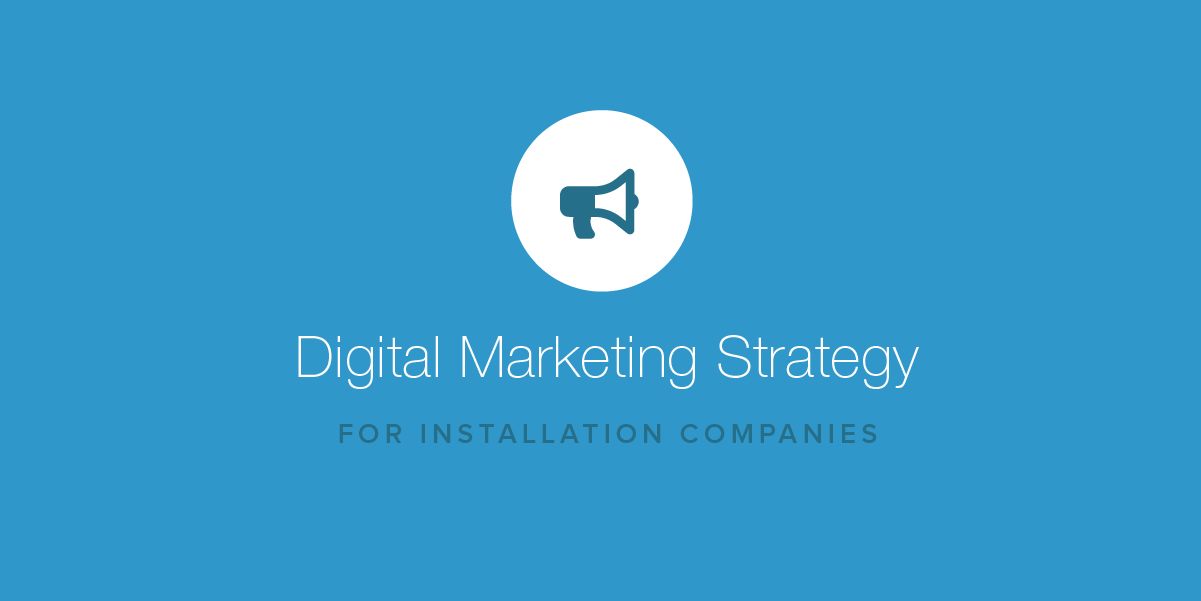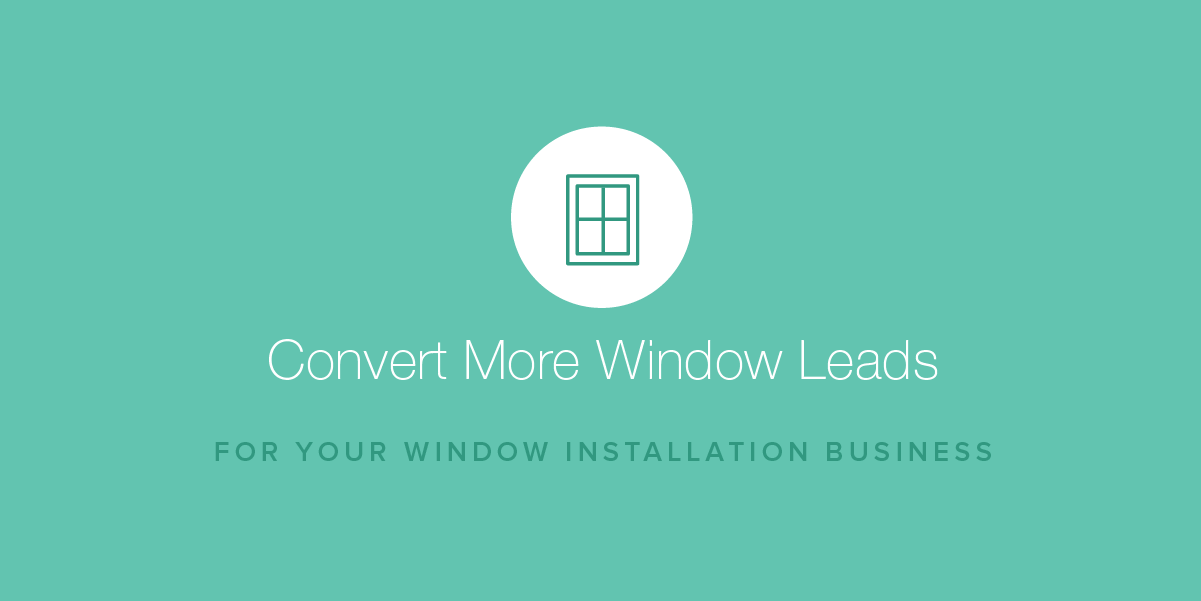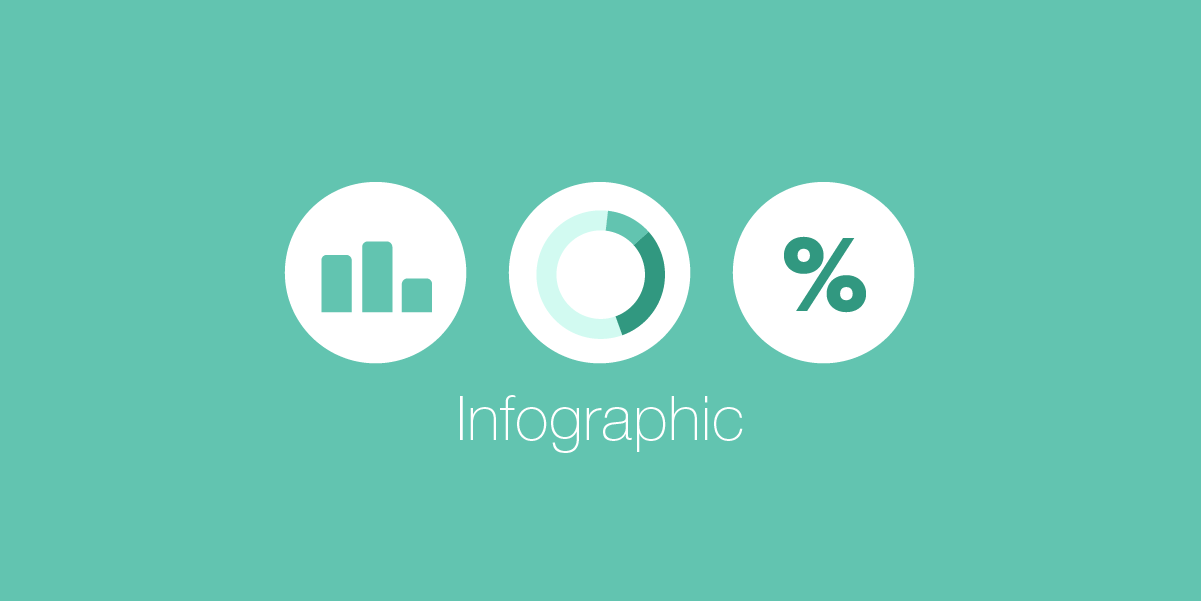How to Make Your Installation Business More Profitable with Technology
- June 8, 2019
- By: Vonigo
When you introduce new technology to your team, you have the opportunity to improve your business on several fronts at once. Your customer experience, your team’s job performance, your internal administration, and more.
Perhaps you’ve already integrated a software suite into your installation business, or you’re thinking about it. Here are a few lessons for coordinating your human team with your tech.
1. Start With a Solid Installation Business Software Suite
When selecting, implementing, or re-visiting your installations business’ software tools, try working backward from your desired customer outcome.
That might mean changing your systems, but it’s in the interest of happier customers. Better experiences in the field make for a happier team too. The tools you use should remove friction from the process of booking, scheduling, and completing jobs, not add more.

2. Identify the Areas of Improvement in Your Business
The obvious hard costs associated with installation jobs are exactly that: hard, meaning there is often little chance to affect your margins on them without sacrificing quality. There are limited ways to save costs on materials and work hours per job.
But what about all of the non-billables that add to your overhead? What if you could reduce the amount of time it takes to go from a customer’s first contact to when your team arrives for the install? What if you could convert a lot more of the right kind of website searchers or visitors?
Expediting your quoting and booking process with online booking can drastically affect the number and the quality of customers that you convert. Not only can you reduce the time it takes to book a job, but you might find that you tap into a higher-margin customer base.
“In addition to the savings from switching to a paperless operation with online booking, we have also experienced other increases in efficiency,” says Tim Tisher, GM Phantom Screen of Southern Alberta. “Having customers book online themselves reduces the workload of our call center and frees up time to spend on other administrative duties. Information only ever needs to be recorded once and transfers seamlessly from start to finish.”
3. Monitor and Improve Metrics Like First-Time Fix Rate
Your “first-time fix rate” refers to the rate at which your installers solve a customer’s problem on the very first call. No callback, no further issues: one and done. Having to revisit a job site with the correct tools, to fix an installation, or to do any other quality control can severely eat into your profitability. Use your available company metrics in your software to identify any trends or overages that you can prevent in the future.
Not only does a great first-time fix rate improve your cash flow (less money lost to turning the truck around, more jobs to be accepted), it does great things for your team. They want to feel successful and know they are working for a company that holds itself to high standards.
TechnologyAdvice suggests that achieving a high first-time fix rate can be achieved with great field service management software. Such automation allows for skill-based task distribution and gives technicians all the necessary details before the service call. This kind of preparation helps the technician succeed the first time.

4. Fill Your Schedule Better and Optimize Your Routes
When your company is operating with an easy-to-use scheduling system, it’s easy to see your availability at a glance. Using online booking, you can set your availability based on where your teams are on any given day. This simplicity of access makes it easier to optimize your schedules, for example booking several jobs in near proximity on the same day to reduce travel time.
Route optimization can help you reduce your driving time between jobs as well, and make recommendations about which jobs to complete first.
5. Get Paid Faster
Giving your installers the option to clock in and out of jobs and generate invoices automatically can save a lot of headaches and reduce the time it takes you to get paid.
Using software with branded and digital invoices means that your field teams can avoid paperwork. If you like, you can also have them accept payment in the field. That’s the number one way to reduce the time it takes to get paid.
6. Set Expectations… and Track Them
Adopting installation services business software centralizes your company’s efforts. Once you start to understand the data, you’ll see patterns and opportunities for growth. The basis of every good business is the people that work there. Take a good look at what your data says about the strengths and effectiveness of your team.
Want to find out more about how Vonigo can help with your field service management? Book a free private demo, and we’ll show you what it can do for your specific business.
